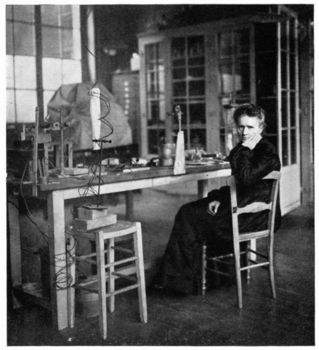All of the scientists on this list died or were injured in their pursuit of knowledge. Many of their sacrifices paved the way for some of the greatest discoveries and inventions known to mankind.
What can we learn from these explorers of years gone by? Gaining knowledge often comes with a price … but without a few brave people willing to push the limits, society as we know it would not be the same.
1. Karl Scheele — Died from tasting his discoveries
Scheele was a brilliant pharmaceutical chemist who discovered many chemical elements, including oxygen (though Joseph Priestley published his findings first), molybdenum, tungsten, manganese, and chlorine. Scheele had the habit of taste-testing his discoveries, and died of symptoms strongly resembling mercury poisoning.
2. Jean-Francois De Rozier — First victim of an air crash
De Rozier was a teacher of physics and chemistry. He took the first manned free flight in a balloon, traveling at an altitude of 3,000 feet. Later, De Rozier planned a crossing of the English Channel from France to England, but after reaching 1,500 feet the balloon deflated, causing him to fall to his death.
3. Sir David Brewster — Nearly blinded
Sir David was a Scottish inventor, scientist, and writer. He performed a chemical experiment in 1831, which nearly blinded him. While his vision did return, he was plagued with eye troubles until his death. Brewster is well known for having been the inventor of the kaleidoscope.
4. Elizabeth Ascheim — Killed by X-Rays
Elizabeth Ascheim gave up her job as a bookkeeper to undertake studies in electrical science. Eventually she bought an x-ray machine, and she and her husband spent some years experimenting with it, using themselves as subjects. Unfortunately they did not realize the consequences of their lack of protection and Elizabeth died of an extremely widespread and violent cancer.
5. Alexander Bogdanov — Killed himself with blood
Bogdanov was a Russian physician, philosopher, economist, science fiction writer, and revolutionary. In 1924, he began experiments with blood transfusion upon himself, but he did not test the health of the blood he was using. In 1928, Bogdanov took a transfusion of blood infected with malaria and tuberculosis, and died shortly after.
6. Robert Bunsen — Blinded himself in one eye
Robert Bunsen is probably best known for having given his name to the bunsen burner, which he helped to popularize. He started out his scientific career in organic chemistry, and nearly died twice of arsenic poisoning. Shortly after that, he lost the sight in his right eye after an explosion of cacodyl cyanide.
7. Sir Humphrey Davy — A catalog of disasters
Sir Humphrey Davy, a brilliant British chemist and inventor, was fired from his job at an apothecary because he caused too many explosions! When he eventually took up the field of chemistry, he had a habit of inhaling the various gasses he was dealing with. This bad habit led to his discovery of the anesthetic properties of nitrous oxide; it also led to him nearly killing himself on many occasions. The frequent poisonings left him an invalid for the remaining two decades of his life. During this time he also permanently damaged his eyes in a nitrogen trichloride explosion.
8. Michael Faraday — Suffered chronic poisoning
Thanks to the injury to Sir Humphrey Davy’s eyes, Faraday became an apprentice to him. He went on to improve on Davy’s methods of electrolysis and to make important discoveries in the field of electromagnetics. But like Davy, Faraday also suffered damage to his eyes in a nitrogen chloride explosion. He spent the remainder of his life suffering chronic chemical poisoning.
9. Marie Curie — Died of radiation exposure

In 1898, Curie and her husband, Pierre, discovered radium. She spent the remainder of her life performing radiation research and studying radiation therapy. Her constant exposure to radiation led to her contracting leukemia and she died in 1934.
10. Galileo Galilei — Blinded himself
Galileo’s work on the refinement of the telescope opened up the dark recesses of the universe for future generations, but also ruined his eyesight. He was fascinated with the sun and spent many hours staring at it, leading to extreme damage to his retinas. This was the most likely cause of his near blindness in the last four years of his life.
11. Louis Slotin — Killed himself with an accidental fission reaction
Canadian born Slotin worked on the Manhattan project, helping to design the first nuclear bomb. In the process of his experimentation he accidentally dropped a sphere of beryllium on to a second sphere, causing a prompt critical reaction (the spheres were wrapped around a plutonium core). Other scientists in the room witnessed a “blue glow” of air ionization and felt a “heat wave.” Slotin was rushed to hospital and died nine days later. The amount of radiation he was exposed to was equivalent to standing 4,800 feet away from an atomic bomb explosion.

Comments are closed, but trackbacks and pingbacks are open.